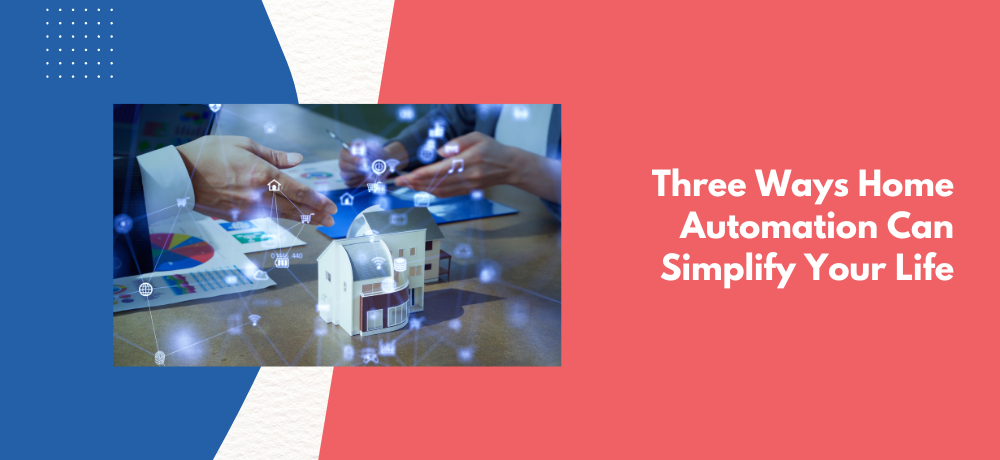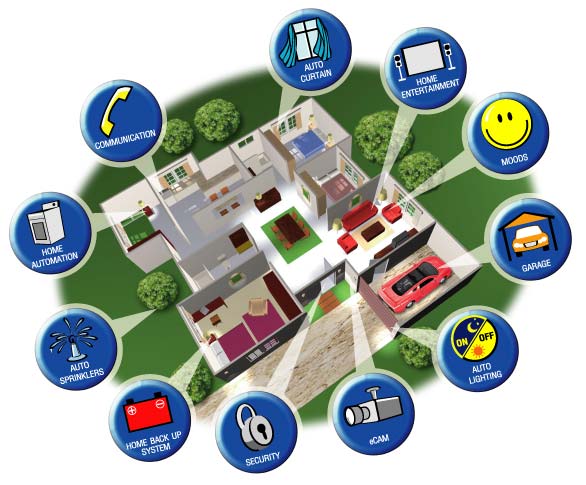To set up smart home systems, choose a central hub and compatible devices. Follow the instructions for each device to connect it to the network and hub.
Also Read
The demand for convenient and efficient home management is rising. As a result, smart home systems have become more common. Homeowners can control lighting, temperature, security, and electronics with the touch of a button. Homeowners can also use a simple voice command.
To get started with a smart home system, select a central hub. Options include Amazon Alexa, Google Assistant, and Apple HomeKit. These platforms allow for seamless integration and centralized control of various smart devices. These devices include thermostats, cameras, smart locks, and lights.
For streamlined operation, all chosen gadgets must operate on the same protocol. They should also be linkable through Wi-Fi or Bluetooth. Follow each device’s setup process. This will create a networked home. It will enhance your convenience and security.

Credit: www.koremmsolutions.com
Table of Contents
Embracing The Smart Home Revolution
The world is changing, and so are our homes. With a tap on a screen, lights dim, music plays, and doors lock. These are the new norms in the era of smart living. Setting up a smart home system can be exciting. It brings convenience and efficiency to our daily routines. Ready to dive in? Here’s how the smart home revolution is shaping the way we live.
Rise of The Connected Living
Our abodes are getting smarter. The number of connected devices is soaring. From smart thermostats to intelligent fridges, each gadget adds a layer of sophistication to our living spaces. The connected living trend isn’t simply about gadgets; it’s about an interactive ecosystem that enhances our life quality. Let’s explore the setup journey.
- Start with a Wi-Fi router: A strong foundation for seamless connectivity.
- Select a smart platform: Choose an ecosystem that all devices can communicate with.
- Identify needs: Prioritize devices based on your daily routines and comfort.
- Install smart devices: Begin with essential items like smart lights and thermostats.
- Configure and sync: Use apps to control devices and create harmonious routines.
- Expand gradually: Add more devices as you get accustomed to the setup.
The rise of smart homes creates a network of devices working together. They create a responsive environment that adapts to your lifestyle.
Benefits of Automating Your Home
Automating your home offers numerous advantages. Consider the convenience, security, and energy savings. Here are key benefits:
| Benefit | Description |
|---|---|
| Convenience | Control home devices from anywhere with just a few taps. |
| Security | Monitor your home in real-time; receive alerts for unusual activities. |
| Energy Savings | Automated systems conserve energy, saving money on utility bills. |
| Comfort | Personalize environment settings for optimal relaxation and productivity. |
Life gets easier when your home responds to your needs. A well-setup smart home can know when to brew your coffee or lock your doors. With automation, every day is a step towards futuristic living.

Credit: www.wired.com
Essential Smart Home Components
Setting up a smart home means knowing the key parts. Like building blocks making a strong tower, these parts create a seamless smart home system. Let’s outline the essential components needed to bring your home into the future.
Variety of Smart Home Gadgets
Smart home gadgets come in many shapes and sizes. Each one adds a level of convenience and control. Think of a symphony, where every instrument plays its part. That’s how these devices create harmony in your smart home. Here are some popular ones:
- Smart Speakers: Voice control your home, play music, or get information.
- Smart Lights: Change colors and set schedules with bulbs that listen to your command.
- Smart Thermostats: Save energy by controlling your home’s temperature from anywhere.
- Smart Locks: Lock and unlock doors remotely for safety and convenience.
Core Devices To Get Started
Begin with these core devices to start your smart home:
- Smart Hub: The brain of your smart home. It connects all devices.
- Wi-Fi Router: A strong internet connection makes sure all devices talk to each other.
Once you have these, add gadgets like:
| Gadget Type | Function |
|---|---|
| Smart Plugs | Turn any appliance into a smart device. |
| Smart Cameras | Keep an eye on your home, inside and out. |
| Smart Sensors | Get alerts for things like doors opening or water leaks. |
Choose each piece with care. Your smart home will grow smarter and more efficient as you add more devices.
Planning Your Smart Home Setup
Embarking on the journey to create a smart home can transform everyday routines into something special. Possibilities with smart technology are endless, but a little planning goes a long way. Taking the right steps from the start ensures a seamless experience. Let’s dive into tailoring your perfect smart home.
Identifying Your Automation Needs
Your adventure begins with figuring out what you want to automate. Ask yourself what daily tasks could use a tech touch. Here are some steps to help you decide:
- List daily activities: Note down the tasks that you do every day.
- Prioritize: Mark the tasks you would love to automate.
- Research: Find smart devices that can handle these tasks.
This groundwork will help you pinpoint essential devices. It makes sure you do not buy what you do not need.
Creating A Cohesive Ecosystem
A smart home ecosystem is all about devices talking to each other. Pick products that speak the same language. You have choices like Wi-Fi, Zigbee, or Z-Wave. Here are pointers for creating a harmony of tech:
| Tip | Action |
|---|---|
| Choose a standard | Select tech that uses common communication standards. It ensures devices work well together. |
| Central Hub | Consider a hub that controls various devices. One app can manage it all. |
| Compatibility | Check compatibility before purchase. Ensure new devices fit the system. |
Not all smart devices play well together. A cohesive ecosystem means fewer headaches and more fun.
Installation And Configuration
Embarking on your smart home journey requires careful planning, installation, and configuration. Transforming your house into a smart home is not only about purchasing the latest devices but also ensuring they are set up correctly for seamless operation. Dive into the process with a step-by-step guide and learn how to tweak your devices for optimal performance.
Step-by-step Guide To Installation
Before diving into the setup, ensure you have all necessary components:
- Smart devices
- Compatible smartphone or tablet
- Stable Wi-Fi network
- Unbox and inspect: Start by unboxing your smart devices. Check for any damage or missing parts.
- Place your devices: Position your devices within your home. Consider proximity to Wi-Fi routers for a strong connection.
- Download the app: Install the appropriate app on your smartphone or tablet. This app will control your smart devices.
- Power up: Connect your devices to power. Use batteries if required.
- Connect to Wi-Fi: Follow the app prompts to connect each device to your home’s Wi-Fi network.
- Test functionality: Test each device to ensure proper operation.
Configuring For Optimal Performance
To get the most out of your smart home system, proper configuration is key:
| Device Type | Action | Benefit |
|---|---|---|
| Smart Lights | Adjust brightness and color settings | Enhance mood and save energy |
| Smart Thermostat | Set temperature schedules | Maintain comfort and lower bills |
| Smart Security | Customize alerts and sensitivity | Increase safety and reduce false alarms |
Lastly, integrate your devices:
- Use voice assistants like Amazon Alexa or Google Assistant for hands-free control.
- Create routines that automate certain actions based on time or triggers.
- Test network stability, and consider a Wi-Fi extender if necessary.
Remember to update software regularly for the latest features and security patches. Enjoy the convenience and efficiency of a well-configured smart home system.
Securing Your Smart Home
Turning your house into a smart home brings convenience at your fingertips. Yet, safety remains a top priority. From keeping hackers at bay to protecting your personal data, security measures are vital. Delve into best practices and address privacy concerns to safeguard your digital fortress.
Best Practices For Digital Security
Shield your smart home with robust security habits. Here’s how:
- Change default passwords on all devices.
- Ensure software is up-to-date to patch vulnerabilities.
- Use two-factor authentication (2FA) for an extra security layer.
- Set up separate networks: one for your smart devices, one for personal use.
- Consider a VPN for your router to encrypt data transmission.
Dealing With Privacy Concerns
Your privacy is crucial. Take control with these steps:
- Regularly review privacy settings on all your devices.
- Read user agreements to be aware of data collection policies.
- Disable unnecessary features that may share your information, like location tracking.
Smart homes should be safe homes. By implementing these strategies, you can enjoy the perks of a connected living space without sacrificing your digital wellbeing.
Troubleshooting And Maintenance
Smart home technology can make life easier. However, just like any tech, it doesn’t always work perfectly. Knowing how to troubleshoot and perform regular maintenance is key. It keeps your smart home running smoothly. Let’s look at some common issues and their solutions. Also, we’ll explain why keeping your system updated is essential.
Common Issues And Solutions
Every technology faces challenges, and smart home systems are no exception. Here are several common issues and their straightforward solutions:
- Device not responding: Check the power source and Wi-Fi connection. Sometimes, a simple reboot can do the trick.
- App connectivity issues: Ensure your smart home app is up-to-date and your mobile device’s operating system is compatible.
- Inconsistent performance: This could be a range issue. Consider the placement of your smart home devices and Wi-Fi router, or invest in a Wi-Fi range extender.
Don’t forget to consult the user manual for device-specific troubleshooting.
Keeping Your System Updated
Staying current with updates ensures your smart home operates at its best. Follow these steps to keep everything up to date:
- Automatic updates: Enable this feature in your device settings for hassle-free updates.
- Regular checks: Manually check for updates monthly if automatic updates are unavailable.
- Security patches: Always prioritize updates that address security vulnerabilities to protect your home.
Maintaining your smart home system’s software helps prevent future problems and keeps your home smarter and safer.
Expanding Your System
Taking your smart home system to the next level is simple and exciting.
You need to integrate new gadgets and stay updated with the latest in smart tech.
This section guides you through expanding your system with ease.
Integrating Additional Devices
Adding new devices to your smart home system enhances your home’s intelligence and convenience.
Consider compatibility, ease of use, and how each device complements your lifestyle.
- Smart Lights: Control lights with your voice or phone.
- Smart Thermostats: Save energy by automating temperature.
- Smart Locks: Secure your home with keyless entry.
- Smart Speakers: Stream music and control other devices.
For seamless integration:
- Ensure your Wi-Fi network has strong coverage.
- Use a centralized app to control all devices.
- Check device compatibility before purchase.
Evolving With Future Technologies
Smart home tech evolves rapidly.
Prepare your system for future updates to stay ahead.
| Upgrade | Benefits |
|---|---|
| Wi-Fi 6 Routers | Faster internet, better device handling. |
| AI Assistants | Smarter interactions, more personalization. |
| Security Updates | Enhanced protection for your devices. |
Keep an eye on tech news.
Subscribe to tech blogs, and join online forums.
This way, you can update your smart home as new features roll out.
Plan your upgrades.
Invest in devices that support wireless updates (OTA).
This will save you time and keep your system cutting-edge.

Credit: www.control4.com
Frequently Asked Questions On How To Set Up Smart Home Systems?
What Are Smart Home Systems?
Smart home systems integrate various home devices and appliances, allowing them to communicate and be controlled remotely. These systems can improve home management, enhance security, and increase energy efficiency through automation and smart devices.
How Do I Begin Setting Up A Smart Home?
To start setting up a smart home, choose a central smart home hub. Connect compatible devices like smart lights, thermostats, and security cameras to the hub. Customize settings via an app for streamlined control and automation.
Which Smart Home Platform Is Best?
The best smart home platform depends on your specific needs and compatible devices. Popular platforms include Amazon Alexa, Google Assistant, and Apple HomeKit. Assess your devices, desired integrations, and personal preferences before choosing a platform.
Can Smart Homes Save Money?
Smart homes can save money by improving energy efficiency. Smart thermostats and lighting adjust usage based on patterns and presence detection. Over time, these adjustments reduce utility bills and conserve resources.
Conclusion
Setting up your smart home system can be a straightforward, rewarding project. By following the steps outlined, you’ll create a connected, efficient living space tailored to your needs. Remember, patience and careful planning ensure seamless integration. Embrace this tech-savvy adventure and enjoy the comfort of your newly enhanced home.




Your point of view caught my eye and was very interesting. Thanks. I have a question for you.
Thanks for sharing. I read many of your blog posts, cool, your blog is very good.